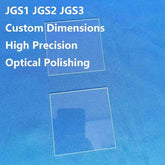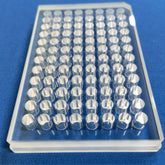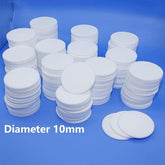The Importance of Scratch Resistance in Sapphire Endoscope Lenses
In the medical field, the widespread application of endoscopic technology has enabled minimally invasive surgery and diagnostic procedures. The quality of endoscope lenses is directly correlated with diagnostic accuracy and surgical success rates, making lens material and performance critical factors in the development and application of endoscopic devices. Among available materials, sapphire, renowned for its exceptional properties, particularly its high scratch resistance, has emerged as the preferred choice for endoscope lenses.
1. The characteristics and advantages of sapphire glass
Sapphire glass, renowned for its exceptional physical properties, particularly its noteworthy performance in terms of hardness and wear resistance, has emerged as the optimal material for the manufacture of endoscope lenses. Sapphire, with a Mohs hardness index of 9, is surpassed in this ranking only by diamond. Therefore, in practical application, sapphire glass has been shown to be highly effective in preventing scratches caused by contact with other objects during operation. This ensures that the lens maintains a clear field of view for an extended period of time.

In addition to its hardness, sapphire glass is notable for its excellent corrosion resistance and high-temperature resistance. These properties enable it to function reliably in medical environments, particularly during high-temperature disinfection processes, protecting it from damage. Consequently, the incorporation of sapphire glass in endoscope lenses not only enhances their scratch resistance but also improves their durability and reliability.
2. The scratch resistance of the sapphire glass endoscope lens
The scratch resistance of the endoscope lenses is of paramount importance when considering their long-term usage. During endoscopic examinations and surgeries, the lens frequently comes into contact with human tissues, instruments and other medical devices. In the event of surface damage to the lens, such as scratching, this may have a detrimental effect on the quality of the image. Consequently, the scratch resistance of the lens is of particular significance.
3. The scratch resistance of sapphire glass is mainly reflected in the following aspects
(1) Enhance the anti-friction ability of the lens
Sapphire glass is characterized by its exceptional hardness, surpassing that of ordinary glass and the majority of metals. Consequently, even under conditions of frequent contact and friction, the surface integrity of the sapphire endoscope lens can be maintained, rendering it resistant to scratching. In comparison with other prevalent glass materials, sapphire glass exhibits superior anti-friction properties, thereby directly prolonging the service life of the lens.

(2) Ensure image quality
In the event of surface damage to the endoscope lens, fine scratches are often observed. Such scratches have been demonstrated to cause abnormal light refraction, thereby affecting the clarity of the image. Sapphire glass is characterized by its extremely high hardness and optical transparency, which contribute to its ability to maintain clarity over an extended period. Even minor surface imperfections will not compromise the clarity of the image, thereby enabling medical professionals to accurately assess the lesion area.
4. The application prospects of sapphire glass endoscope lens
The development of medical technology is leading to a wider range of applications for endoscopic surgery. From simple examinations to complex surgeries, endoscopes have become an essential instrument in medical practice. Sapphire glass, renowned for its exceptional scratch resistance, is the optimal material for endoscope lenses.
Sapphire glass is an increasingly essential material in endoscope lenses due to its exceptional scratch resistance and other superior properties. It not only extends the service life of the endoscope, but also ensures the image quality and safety during the surgical process. Sapphire glass is set to become a key component in medical equipment, driven by the continuous technological advancements and increasing application of this material.






